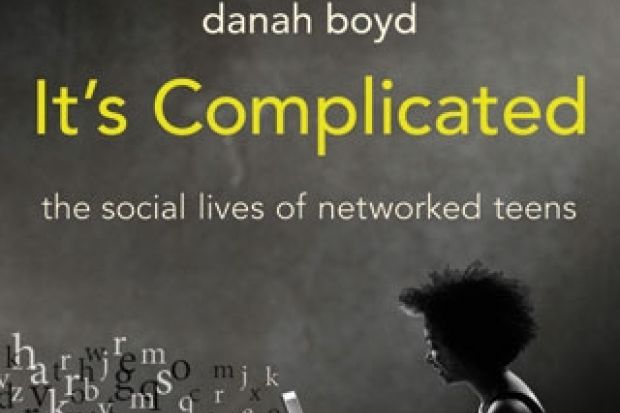Famously and apocryphally, Tony Wilson – the man who transformed Manchester’s music industry – stated: “If you get it, great. If you don’t, that’s fine too. But you should probably read more.” Whenever appraising new monographs about “youth” and “technology”, Wilson’s maxim resonates in my ears.
Danah Boyd’s latest book is a strong text in the dire field of new media studies. The introduction, however, does not bode well. Boyd states that her purpose is “to describe and explain the networked lives of teens to the people who worry about them – parents, teachers, policy makers, journalists, sometimes even other teens”. While framed as a guide to understanding young people (these days), her introduction does not do justice to her research.
In the eight chapters that follow, the book is at its best when probing privacy, danger, bullying and literacy. While these digital folk devils could have overwhelmed the argument, the research is sound and the interview material rich. Boyd’s goal is clear: to capture and express “the voice” of “teens”. The problem with such an aim is that technology is not generationally specific. People of all ages use YouTube, Instagram, Facebook and Twitter. There are distinct sociologies of platform use, but age is merely one factor to consider.
The generation gap is a blunt analytical instrument. Consider Boyd’s language here: “many adults fear networked technologies for the same reasons that adults have long been wary of teen participation in public life and teen socialization in parks, malls, and other sites where youth congregate”. Youth was and is a historical bag into which the fears and hopes of a particular time and place are packed.
The chapter on risk is the strongest. Boyd comes to a powerful realisation: “The risks that youth face online are not evenly distributed. Teens who are most at risk online are often struggling everywhere.” Unstable families, unsafe streets, underfunded schools and obsolete hardware and software combine to create multilayered, generational disadvantage. Through this discussion of risk, Boyd also probes “a culture of meanness and cruelty”. One way to become a micro-celebrity from a mini-digi-moment is to upload a video demeaning others. In such a culture of hate and hurt, “attention becomes a commodity”.
Boyd has overcooked some of her arguments, particularly on the subject of entering formal education. She has not recognised the deep and complex curricular work being activated in schools and universities to embed and enable information and media literacy. She states: “Most formal educational settings do not prioritize digital competency, in part because of the assumption that teens natively understand anything connected to technology.” This bold declaration does not reflect the digital advancements within schools and universities. No footnote follows her statement, because it is incorrect. This error is important, justifying the priorities of the author, who is a principal researcher at Microsoft Research, research assistant professor in New York University’s department of media, culture and communication, and a fellow at Harvard’s Berkman Center for Internet and Society. Corporate interests demean public institutions such as universities.
It’s Complicated attests to the challenge confronted by all writers entering the culture of “young people”. We walk in the shadow of Paul Willis, whose Learning to Labor: How Working-Class Kids Get Working-Class Jobs is the bedrock text when researching the daily life of young people. He argued that young working-class men gained working-class jobs because they “resisted” the structures that could have enabled their social mobility. Truanting and swearing at teachers were strategies to resist the powerful, but blocked the possibilities of learning. Researchers exploring young people on/in/through the internet would be wise to reread his words. The desire of academics in the subgenre of new media studies is to show that very simple activities – text messaging, recording and uploading films to YouTube, Facebook updates, Instagram selfies – are distinctive and empowering. The old people don’t understand. The young people are “alright” (man).
This structural connection of youth and media relies on active forgetting. The internet – or the Arpanet – is 45 years old. The World Wide Web is 25. Blogging is a teenager. These platforms are not new and not limited to a particular age. Stan – one of Boyd’s interviewees – “remind[ed] me that technology wasn’t changing anything important”. If we are really listening to the voice of “the young people”, then scholars should follow Stan’s advice.
It’s Complicated: The Social Lives of Networked Teens
By Danah Boyd
Yale University Press, 296pp, £17.99
ISBN 9780300166316
Published 11 March 2014
Register to continue
Why register?
- Registration is free and only takes a moment
- Once registered, you can read 3 articles a month
- Sign up for our newsletter
Subscribe
Or subscribe for unlimited access to:
- Unlimited access to news, views, insights & reviews
- Digital editions
- Digital access to THE’s university and college rankings analysis
Already registered or a current subscriber? Login





